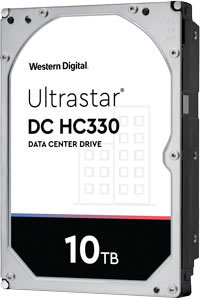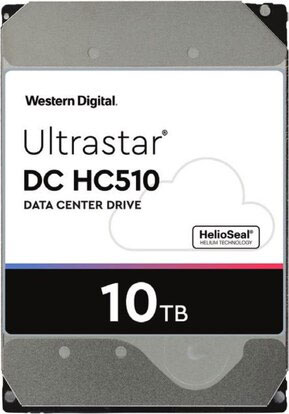WD has released a 10TB air-filled hard device which is a cheaper, faster alternative to helium hard drive. This article will state the air-filled drive by comparing it with the helium-filled drive from two aspects, namely the cheaper and faster air-filled hard drive.
Western Digital has introduced its new top-of-the-range air-filled hard drive for enterprises that use storage servers, RAID arrays, and distributed storage. The alternative to helium hard drive boasts a faster data transferring rate and lower price than its 10TB helium-filled hard drive.
In recent years, the capacities of helium-filled drives vary from 10TB to 16TB. The air-filled drive technology also processed with capacities rising to 6TB with Ultrastar 7K6 and on to 8TB with the Ultrastar 7K8.
Now Western Digital has boosted its air-filled drive technology further to produce the 10TB Ultrastar DC300 which is expected to ship in September. This device is the follow-on to the Ultrastar 7K6 and 7K8 drives, with a rebranding to a DC HC3xxx scheme.
Cheaper Air-filled Hard Drive
Why are air-filled drives cheaper than the helium-filled drives? Traditional air-filled drives are cheaper to make than helium-filled drives, as the former needs fewer platters and heads, and less firmly sealed cases.
Furthermore, as magnetic recording media technology developed, are-filled capacities developed to meet the low-end helium-filled drivers and provide equivalent at less cost.
Faster Air-filled Hard Drive
Why are air-filled drives faster than helium-filled drive? Take the comparison between DC HC510 and DC HC330 for example.
The WD Ultrastar DC HC330 is the latest addition to the company’s Ultrastar DC HC300-series family that includes 4, 6, and 8TB hard drives.

While these hard drives are classified as ‘datacenter’ devices, they are aimed at the enterprises that need loads of storage space and high performance, instead of those operating large datacenters that require maximum capacities.
The 10TB He10 was rebranded as the DC HC510. The He10 is an HDD that utilizes RMR technology and HGST’s proven HelioSeal technology. This new HDD is designed to deliver capacity, efficiency, and reliability, and to reduce power usage to the data center.

Here are the differences between Ultrastar DC HC330 and Ultrastar DC HC as regarding speed performance.
The Ultrastar DC HC510 hard drive features 7 platters, 1.428GB/platter and an 816Gbit/sq in areal density. However, the DC HC330 has 6 platters, 1.666GB/platter and an 868 Gbits/sq in areal density. This is 6.4 per cent more than the DC HC510.
The DC HC300 and HC510 rotate at 7,200rpm, have 256MB buffers, hardware encryption options and are available with 6Gbits/s SATA and 12Gbits/s SAS interfaces.
The DC HC330 has a 2million MTBF (Mean Time Between Failure) rating and an 0.44 per cent AFR (Annual Failure Rate). In contrast, the DC HC510 MTBF is 2.5 million hours and AFR is 0.35 per cent.
As for the transfer rate, the DC HC510 can sustain a 249GB/sec transfer rate; the DC HC330 with a NAND cache can deliver up to 273GB/sec.
What’s more, the DC HC330 hard drive introduces the company’s Media Cache technology that promises to improve write speed up to 40 per cent with low queue depth, small block random writes, according to Western Digital.
Computer users may expect the DC HC 510 to give away to the lower-cost but faster DC HC 330, and similar 10TB air-filled technology to appear in Western Digital’s Red and Gold brand drives.
To know more information of hard disk, please click What Is Hard Disk? Comparisons Among SSD, HDD and SSHD.

User Comments :